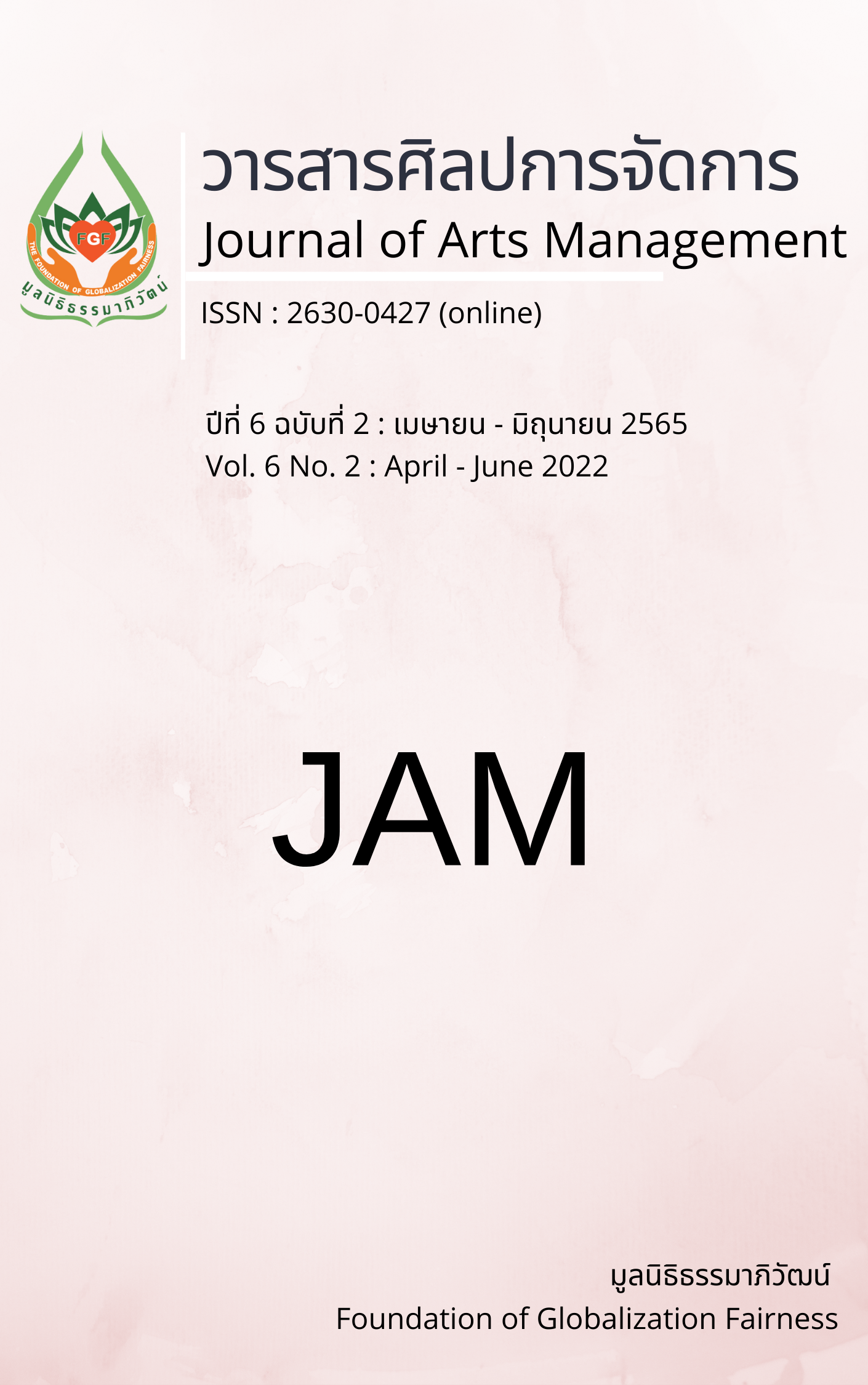The Confirmatory Factor Analysis of Employee Engagement of Community Hospitals’ Employee
Main Article Content
Abstract
The objective of this study was to analyze the confirmatory factors of community hospital employees. This was quantitative research. The sample consisted of 444 employees who worked in Doem Bang Nang Buat hospital and Bang Pla Ma hospital. Stratified random sampling was used. Questionnaires were used to collect data, with Cronbach’s alpha confident was .922 The data were analyzed by Lisrel program. The result showed that the proposed model Fitted with the empirical data. The analysis showed that the model of confirmatory factor of employee engagement of community hospital's employees fitted with the empirical data, in which the maximum factor loading was the emotion factor. The subsequent factors were the doing factor, supporting factor, and thinking factor, respectively. All factor loadings were between .35 - .84, R. Squared (R2) was between a percentage of 12.0 - 70.0, the average variance extracted (AVE) was between .33 - .60 and the construct reliability (CR) was between .70-.94. Suggestions from the research should be created engagement program, especially the emotion factor. Another suggestion, corporate executives should set policies, support, and develop employee engagement for sustainable happiness and achievement.
Article Details

This work is licensed under a Creative Commons Attribution-NonCommercial-NoDerivatives 4.0 International License.
Views and opinions appearing in articles in the Journal of Arts of Management It is the responsibility of the author of the article. and does not constitute the view and responsibility of the editorial team I agree that the article is copyright of the Arts and Management Journal.
References
Anitha, J. (2014). Determinants of employee engagement and their impact on employee performance. International Journal of Productivity and Performance Management, 63(3), 308-323.
Apibansri, C. (2018). A confirmatory factor analysis of the organizational commitment of the teachers working under the Primary Educational Service Area (PESA) in the Eastern region. 2nd Innovation for Learning and Invention 2018 (ILI 2018. 18 July 2018 at Rajamangala University of Technology Thanyaburi, Pathum Thani Province. 400-410.
Archa, J. (2018). An analysis of employees’ corporate commitment factors of Krung Thai Bang Public Company Ltd. In the Northeastern region 2[Master’s Thesis, Rajabhat MahaSarakham University].
Bhatnagar, J., & Biswas, S. (2009). The mediator analysis of psychological contract: Relationship with employee engagement and organizational commitment. International Journal of Indian Culture and Business Management, 5(6), 1-23.
Cook, S. (2008). The essential guide to employee engagement, better business performance through staff satisfaction. Kogan Page.
Curran, P. J., West, S. G., & Finch, J. (1996). The robustness of test statistics to nonnormality and specification error in confirmatory factor analysis. Psychological Methods, 1,16-29.
Deci, E. L., & Ryan, R. M. (1985). Intrinsic motivation and self-determination in human behaviour. Plenum.
Fornell, C., & Larcker, D. F. (1981). Evaluating structural equation models with unobservable variables and measurement error. Journal of Marketing Research, 18(1), 39-50.
Gallup Organization (2013). The 2013 state of American workplace report employee engagement insights for business leaders worldwide. Gallup.
Herzberg F., Mausner, B., & Snyderman, B.B. (1959). The Motivation to work. John Wiley & Sons.
Intraprasert, D. et. al. (2015). Survey of employee satisfaction of the expressway authority of Thailand. Srinakharinwirot University.
Kahn, W. (1990). Psychological conditions of personal engagement and disengagement at work. Academy of Management Journal, 33(4), 692.
Kerdcharoen, J. (2018). The Factors Development of Nurse engagement for regional Hospitals in health region 6, Ministry of public health[Doctoral dissertation, Rajabhat Rajanagarindra University].
Kline, R. B. (2005). Principles and practice of structural equation modeling. Guilford Press.
Lamounpuk, S. (2015). Multilevel antecedents and effects of professional engagement on job performance and intention to leave nursing profession of professional nurses in governmental hospitals, Bangkok metropolitan area[Doctoral dissertation, Srinakharinwirot University].
Limkitisuphasin, P. (2013). The relationship between the organizational engagement and the improvement in the quality of health care[Master’s Thesis, Rajamangala University of Technology Thanyaburi].
Maslow, A. H. (1970). Motivation and personality. Harper and Row.
McClelland, D. C. (1962). Business drive and national achievement. D. Van Nostrand.
Murray, C. (2002). IQ and income inequality in a sample of sibling pairs from advantaged family backgrounds. American Economic Review, 92(2), 339-343.
Office of the National Economics and Social Development Council, Office of the Prime Minister. (2016). National Economics and Social Development No. 12. 2560-2564. Office of the Prime Minister.
Phongnaksiri, P. (2022). The relationship between human resource practices and employee engagement of startup organizations/businesses in Bangkok[Master’s Thesis, Mahidol University].
Rich, B. L., Lepine, J. A., & Crawford, E. R. (2010). Job engagement: antecedents and effects on job performance. Academy of management journal, 53(3), 617-635.
Saks, A. M. (2006). Antecedents and consequences of employee engagement. Journal of Managerial Psychology, 21(6), 600-619.
Schumacker, R. E., & Lomax, R. G. (1996). A beginner's guide to structural equation modeling. Lawrence Erlbaum Associates.
Suryanarayanan, I., & Israel, D. (2011). Structural equation modeling for testing the impact of organization communication satisfaction on employee engagement. South Asian Journal of Management, 19(1), 13-23.
Thiemphet, D. (2013). Organizational commitment of personnel at Sa Kaeo Crown Prince Hospital. [Master’s Thesis, Burapha University].
Vanichbuncha, K. (2014). Analysis of Structural Equation Model (SEM) with AMOS (2nd ed.). Sam Lada Limited Partnership.


